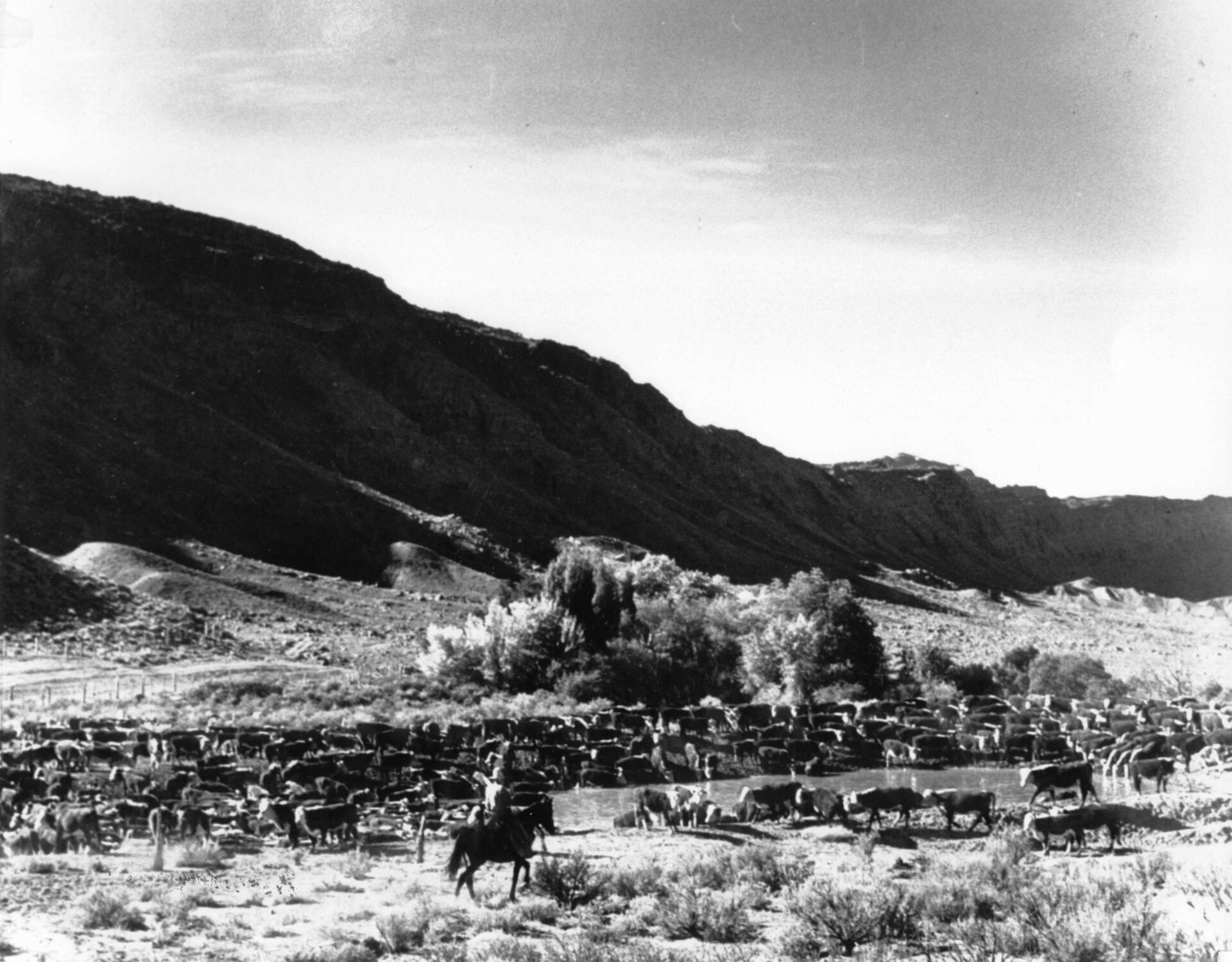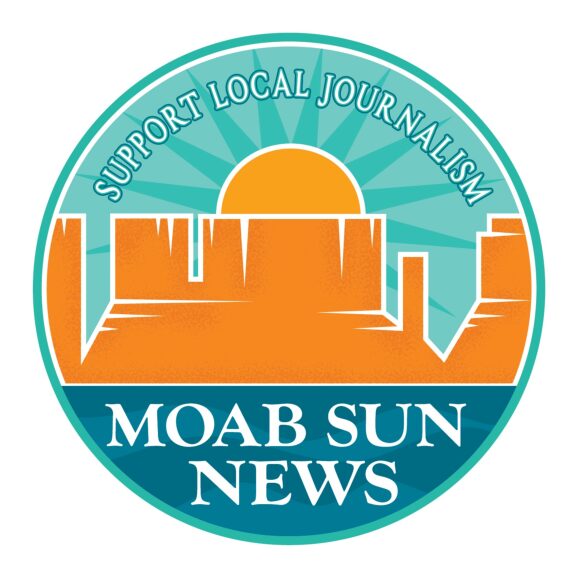As the Museum launches into the history and lasting legacy of the 1943 incarceration of Japanese Americans and Moab’s role in these national-scale events, we turn to the Fall/Winter 1993 Issue of the Canyon Legacy and Bruce D. Louthan’s work exploring Dalton Wells’ history as a CCC Camp. What was Dalton Wells before a Moab Prison Camp?

Today as drivers swing around a slow curve on Highway 191 fourteen miles north of Moab, they can see two short concrete pylons flanking the turnoff to a dirt road leading east towards Courthouse Wash. Learning about the large Civilian Conservation Corps (CCC) camp that once stood at the now all-but-deserted site is quite a surprise to younger people and later arrivals in the area. However, the intrigue of learning about the long-gone buildings in this seemingly least hospitable of places is only part of the significance of this site. That does not portray the real impact of federal programs of which the CCC was only a precursor. Perhaps the greatest significance of the CCC era at Dalton Wells is its symbolism as a forerunner of modern federalism.
In the summer of 1935 Grand County was hard pressed by the Great Depression, as were all parts of the country. In addition to the economic problems of the time, major natural resource challenges confronted the area. Like many parts of the West, drastic results of overgrazing were seen in all directions from depletion of the available forage to ferocious flash floods. It is hard now to grasp these facts since few have experienced these problems locally to the degree then all too common. Numerous resource conservation programs have mitigated the impacts of such events in recent years so that few can now appreciate their catastrophic power. Even at the time, few realized all the reasons for the natural events then unfolding.
The roots of the problem lay in the very success of American agriculture in the last half of the nineteenth century. As floods of immigrants came to the United States from Europe after the Civil War, they poured out onto the Great Plains and tamed it for agriculture, both farming and ranching. It seemed that there would be land and resources enough for all to fulfill the American dream.
As those lands filled up, the tide flowed westward into the Rockies where mining had already opened the way and pushed the Native Americans onto reservations. At the same time, the Mormons in central Utah were running out of room for new colonies and began to push into more difficult and harsh environments to settle.
About 1880 the two forces combined to settle Grand and San Juan counties, both areas largely of desert vegetation and limited water. Mellowing of the climate in the 1850’s also provided a warmer average climate and more frost-free days to raise crops.
At first, with relatively few people, there was sufficient arable land and water. With the drought in the late 1880’s and again in the mid-90s and the creaming off of the first best grass by big commercial ranchers, sheep were brought in to take advantage of the brush and rougher forage.
The climate then intervened again. Starting in at least 1903 when annual precipitation records begin, available moisture increased for about 25 years to an average of two and a half times the current average. This led to the improvement of grazing conditions and a fairly steady growth in the grazing industry. Dry farming was also attempted on the mesas of San Juan and Grand counties in areas that now look foolhardy (hindsight is not always 20/20!). However, this growth of agriculture, over time, had its price in increased friction among grazers on the rangelands all over the West.

Population growth led to the splitting and spreading of family herds, consequently causing competition for forage areas. With the livelihood of their families at stake, this competition was not always friendly or fair and eventually led to overgrazing of the areas available to each rancher. Then calamity struck as annual precipitation plummeted to lower than current rates. This was particularly disastrous since most of the loss was in winter snow which tends to melt slowly into the ground, becoming available to plants rather than running off. This spring melt is crucial to many range plants; without it they make little annual regrowth. Strong summer thunderstorms in July and August offer little help due to quick runoff and evaporation.
The result was a deadly combination of torrential rain on shrinking plant cover from overgrazing and poor growth conditions, causing dramatic erosion and catastrophic flash floods. Dry farms dried up and were deserted. As the amount of forage diminished, clashes among ranchers occurred all over the West, even reaching the national press. As if the horrendous growing conditions were not enough, the impact of the Depression on agricultural prices was frightening; and American farmers and ranchers welcomed the prospect of government action under President Franklin Roosevelt to resolve the disaster.
In this setting the Civilian Conservation Corps was created in 1932. It worked well in the forests, parks and near cities. But no agency existed to undertake natural resource management on the vast public lands managed by the General Land Office. These non-forest lands were what was left after all the homesteads, mining patents and desert land entries were taken: the “lands nobody wanted.” Lands nobody wanted to pay taxes on, that is, for these lands were used, even overused. In fact, they were all divvied up through customary use and held by force, if necessary, for grazing.
Responding to this need, the federal government created the Grazing Service in 1934, which merged with the General Land Office after World War II to become the Bureau of Land Management. At first preoccupied with allocating rangelands among ranchers, by April, 1935, Division of Grazing CCC camps began to appear in Utah, one being in Blanding. Dalton Wells camp opened in October and continued in operation until September 1941.
For the full issue, visit moabmuseum.org/canyon-legacy. And stay tuned for future columns on the CCC Camp at Dalton Wells.
The Moab Museum is dedicated to sharing stories of the natural and human history of the Moab area. To explore more of Moab’s stories and artifacts, find out about upcoming programs, and become a member, visit www.moabmuseum.org.



